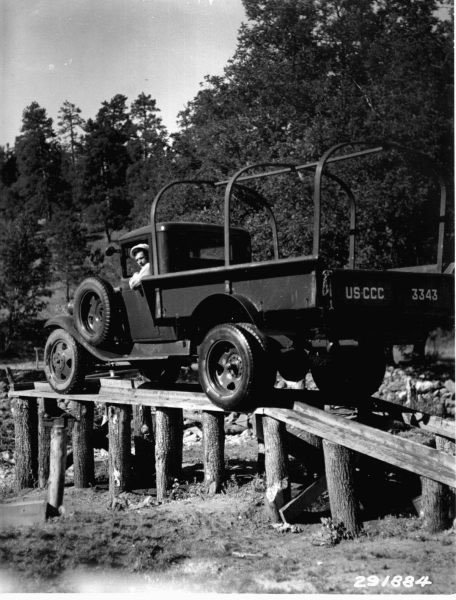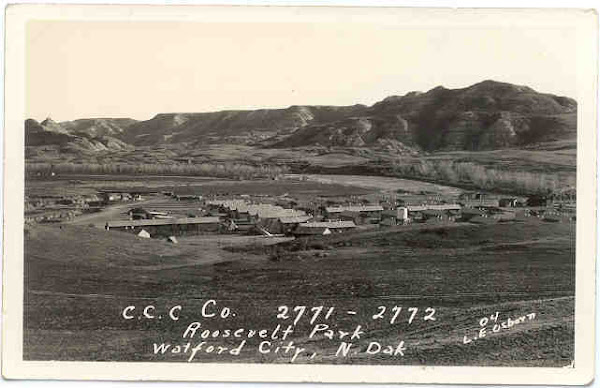 New Deal Days: The CCC at Mesa Verde by Ronald C. Brown and Duane A. Smith, published by the Durango Herald Small Press in 2006 as part of the Mesa Verde Centennial Series, is a tidy account of the accomplishments of the CCC at Mesa Verde in southwestern Colorado.
New Deal Days: The CCC at Mesa Verde by Ronald C. Brown and Duane A. Smith, published by the Durango Herald Small Press in 2006 as part of the Mesa Verde Centennial Series, is a tidy account of the accomplishments of the CCC at Mesa Verde in southwestern Colorado.Although the book is somewhat short, the author’s have wisely chosen to keep their discussion and analysis of the creation and general history of the CCC relatively brief, thus giving over more space for the terrific story of the CCC history at Mesa Verde National Park. After all, most folks who consider picking up a book of this sort will likely have come to understand the situation in the United States in 1933 when the first CCC enrollees arrived at Prater Canyon to occupy a camp that can only accurately be characterized as “rustic.”
Brown and Smith provide wonderful snippets of camp life, drawing on personal accounts from enrollees who were at Mesa Verde as well as official records and camp newspaper accounts of activities. From the rigors of working on a bug crew to swapping out the carburetor jets on the trucks, even seemingly mundane tasks associated with life in the CCC camps are worthy of mention in the text. And, while CCC work was “labor intensive and characteristically unglamorous,” it seems the enrollees could always make time for taking potshots at a bobcat with a “bean shooter” or for dumping a local jail building in the river!

Also noteworthy are the more than 35 photos that illustrate the text as well as the walking tour of CCC projects that is included near the end of the book. (The walking tour was written by Don Ross.) Also, for those with a particular interest in camp architecture, there is a terrific section entitled “Architecture, Design and Construction of CCC Camps at Mesa Verde” written by Susana M. Jones also included in the text.
You can see (and purchase) the New Deal Days at the publisher’s website Here.
Be sure to visit the Mesa Verde Museum Association website.
At roughly 130 pages in length a book of this size leaves you wondering what else there might be to uncover. (For example, what were the exact details regarding the jail and its dip into the river?) Nevertheless, this book is still another required addition for anyone hoping to compile a library of meaningful CCC books and with a cover price that is altogether reasonable, there really isn’t any excuse to pass this one up.



 The bookseller was evidently selling off lots of items related to Mr. Young’s life and in another group was a collection of photos, presumably of Wendell and family or friends. What I find especially interesting is the significant difference between the photo of Wendell at a family gathering (above) compared to the image of the rough and ready outdoorsman in another photo presumably taken at camp (below).
The bookseller was evidently selling off lots of items related to Mr. Young’s life and in another group was a collection of photos, presumably of Wendell and family or friends. What I find especially interesting is the significant difference between the photo of Wendell at a family gathering (above) compared to the image of the rough and ready outdoorsman in another photo presumably taken at camp (below).


















